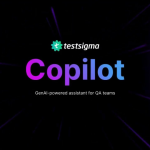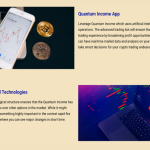Mentoring programs are a powerful way to foster professional growth, encourage knowledge sharing, and improve employee engagement. However, managing them can be a complex and time-consuming task, especially in large organizations. Digital tools have become increasingly effective at streamlining the planning, execution, and management of such programs without de-personalizing the overall mentoring experience. These tools enable HR teams and program managers to match mentors and mentees, track progress, measure outcomes, and maintain communication more efficiently. Here’s how:
1. Mentoring Platforms
Specialized mentoring platforms are designed to streamline the entire mentoring process, like matching mentors with mentees and tracking progress. These platforms can be customized to design a mentoring program that aligns with the company’s goals.
- Chronus: Chronus is a powerful mentoring platform that automates the mentor-mentee matching process, using algorithms to match participants based on their goals, skills, and availability. It also offers tools to track goals and progress, communicate via messaging or video calls, and generate reports on the program’s success. Available program templates and features that integrate with HR tools makes getting started with Chronus intuitive and efficient.
- MentorcliQ: MentorcliQ is another digital tool that helps organizations build structured mentoring programs. It offers a platform for onboarding, matching, and managing mentors and mentees. It includes features for setting goals, scheduling sessions, tracking progress, and reporting outcomes. MentorcliQ can integrate with learning management systems (LMS) and talent management platforms to provide a holistic approach to employee development.
These platforms automate administrative tasks and reduce the manual work involved in tracking relationships, allowing mentors and program administrators to focus more on the quality of interactions and mentoring development.
2. Collaboration and Communication Tools
Effective communication is at the heart of any successful mentoring relationship. Digital communication tools ensure that mentors and mentees can stay in touch, share resources, and track progress, even if they are working remotely or in different locations.
- Slack: Slack is a messaging platform that can be used for real-time communication between mentors and mentees. It allows participants to create specific channels for one-on-one conversations or group discussions, making it easier to share information and feedback. Slack also integrates with various apps and tools, such as calendars and project management software, to streamline communication and scheduling.
- Microsoft Teams: Like Slack, Microsoft Teams is a communication and collaboration platform that integrates seamlessly with Office 365 applications. It supports chat, video conferencing, and file sharing, making it a versatile tool for mentors and mentees to engage in productive discussions and share relevant resources, documents, or notes.
- Zoom: For virtual mentoring sessions, Zoom is a widely-used video conferencing tool. It supports face-to-face meetings, which are important for relationship-building, even when mentors and mentees cannot meet in person. Zoom’s features, such as screen sharing, breakout rooms, and recording, help enhance the mentoring experience by facilitating real-time collaboration and follow-up.
3. Scheduling and Time Management
Scheduling can be a significant challenge for mentoring programs, particularly when mentors and mentees have busy and conflicting schedules. Digital scheduling tools can help eliminate scheduling conflicts and ensure that both parties are able to dedicate time to the mentoring relationship.
- Calendly: Calendly is a scheduling tool that allows mentors and mentees to easily find mutually available times for meetings. Both parties can sync their calendars, set available time slots, and automatically send meeting reminders. This eliminates the back-and-forth of finding a time that works for both and ensures that mentoring sessions are scheduled with minimal friction.
- Doodle: Doodle is another scheduling tool that simplifies the process of finding the best meeting time. It works well for organizing group sessions, where several people need to find a common time to meet. Doodle lets users propose several time options and have participants vote on the times that work best for them.
- Acuity Scheduling: Similar to Calendly, Acuity Scheduling allows users to create personalized booking pages, integrate with various calendar platforms, and set automated reminders. Acuity is ideal for program administrators who want to offer flexible scheduling options to participants.
By using scheduling tools like Calendly or Doodle, program managers can streamline the process of booking meetings and prevent confusion or missed appointments.
4. Goal-Setting and Progress Tracking Tools
Tracking the progress of mentoring relationships and ensuring that both mentors and mentees are meeting their objectives is essential for a successful program. Digital tools that focus on goal setting and progress tracking can ensure that the mentoring process stays on course and provides measurable outcomes.
- Trello: Trello is a project management tool that can be used to organize mentoring goals, set timelines, and track progress. Mentors and mentees can create boards to outline specific learning objectives, document tasks, and check off completed actions. Trello’s simple, drag-and-drop interface is easy to use and provides a clear overview of progress.
- Asana: Asana is another project management tool that allows users to set goals, create tasks, and track progress over time. Mentors and mentees can use Asana to break down long-term goals into smaller, manageable tasks and assign due dates. Program administrators can use Asana to track multiple mentoring relationships, ensuring that goals are being met across the entire program.
- 15Five: 15Five is a performance management tool that focuses on continuous feedback, goal setting, and employee development. It helps mentors and mentees set clear, measurable goals and track their progress. 15Five also allows for regular check-ins, where both parties can review progress, share feedback, and discuss any challenges faced during the mentoring process.
5. Surveys and Feedback
Feedback is crucial for the ongoing improvement of a mentoring program. Gathering input from both mentors and mentees can provide insights into the effectiveness of the program and highlight areas for improvement.
- SurveyMonkey: SurveyMonkey is an online survey tool that allows program administrators to collect feedback from participants. It can be used to create customized surveys that assess the quality of the mentoring relationships, the achievement of goals, and overall satisfaction. SurveyMonkey also offers analytics tools to help interpret survey results.
- Google Forms: Google Forms is a free tool that can be used to gather feedback from participants. It’s simple to set up and can be customized with various question types. Google Forms can be integrated with Google Sheets for easy data analysis.
- Typeform: Typeform offers visually engaging and user-friendly survey creation, making it an appealing option for gathering feedback from mentees and mentors. Typeform’s design makes it easy to create interactive, multi-step surveys that are more engaging for respondents.
Digital tools have revolutionized how organizations can plan and manage mentoring programs, making them more efficient, scalable, and accessible. Mentoring platforms, communication tools, scheduling software, project management tools, and feedback systems can help streamline the entire process, from pairing mentors and mentees to tracking progress and measuring outcomes. By leveraging these tools, organizations can ensure that their mentoring programs are well-structured, engaging, and impactful, ultimately driving employee development and fostering a culture of learning and growth.
Lynn Martelli is an editor at Readability. She received her MFA in Creative Writing from Antioch University and has worked as an editor for over 10 years. Lynn has edited a wide variety of books, including fiction, non-fiction, memoirs, and more. In her free time, Lynn enjoys reading, writing, and spending time with her family and friends.















